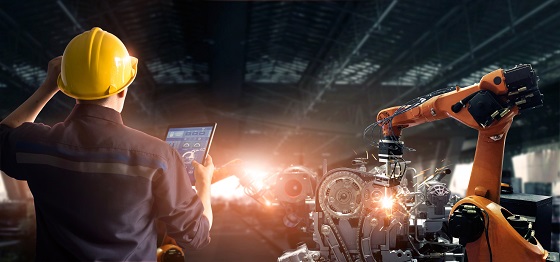Collaborative robot solution manufacturers are leveraging the convergence of several enabling technologies such as artificial intelligence (AI), machine vision, and advanced gripping technologies in robots making them safe to work with thereby disrupting traditional robotic solutions as well expanding robotic use cases to laboratories, healthcare, semiconductor wafer handling, and assembly.
This is according to research by ResearchandMarkets in their report Collaborative Robots, 2020. Collaborative robots solutions have provided manufacturing flexibility in terms of being able to quickly adapt to line changeovers and newer tasks owing to easy programming and manual guiding training techniques making them immediately deployable.
Traditional industrial robots
Conventional manufacturing setups have been exposed to traditional industrial robots over the years that have gained widespread adoption globally. However, there is a growing demand for worker safety in factory settings, increasing need of manufacturing industries to match market demands and a burgeoning requirement for businesses to remain competitive, which have laid the foundation for the adoption of modern manufacturing methods such as collaborative robots.
User comfort
User comfort is the need of the hour laying the foundation for advancements in robotics. Cobot advancements are leading to increased user safety, reduced strain on humans, and lesser effort required from human labor. In the development of collaborative robot solutions, there are several influencing factors to be considered, which will in turn aid in the disruption of current technologies that are indeed cumbersome to use.
Balance
It is critical to ensure the right balance between technology advancements, expansion of product portfolios to increase application diversity, and strategies to innovate for example: collaborating with universities to develop more user-friendly and easy to maneuver robots as well as in the development of lighter robots. The publisher’s analysis indicates that despite being able to cater to a variety of industrial applications, collaborative robots technology is yet to reach small and mid-sized industries, which are just beginning to explore automation.
Fourth industrial revolution
The fourth industrial revolution can be realized to its full potential with the awareness created about cobots through effective marketing and by adopting robots-for-hire which are easy-to-afford business models that will expand the reach of the technology. Major collaborative robot arm manufacturers are focusing on expanding their global footprints through traditional business models such as direct sales through distribution centers while few are tying up with robot rental third-party solution providers. However, the new age autonomous cobot providers are leaning toward the robots-as-a-service model, which have proven to be favorable in providing a far-reaching impact of the technology within a short span.

